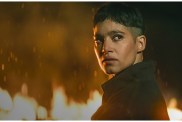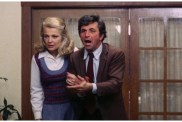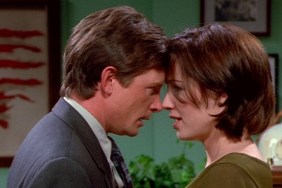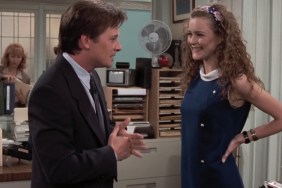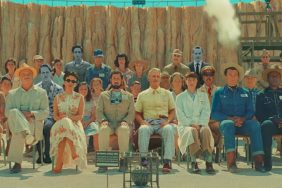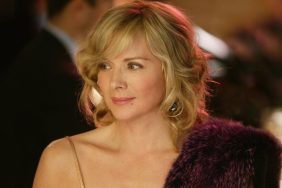With a string of successful adaptations under their belt, especially the “Narnia” series, Walden Media has been at the forefront of the current fantasy revival. And when they left Disney to join the Murdoch family as the freshly-minted FoxWalden, they needed some new titles to bring to the big screen. Luckily for them, Tom Hanks and PlayTone had just picked up the rights to one of the latest, and more idiosyncratic claimants to Harry Potter’s throne.
The feature adaptation of the first of Jeanne DuPrau’s “Books of Ember” series of post-apocalyptic children’s fantasies (four words I don’t often get to write together); City of Ember is or, at least, will be the latest in Hollywood’s current fantasy craze. And while “The Chronicles of Narnia” and the like languished for decades until Hollywood felt there might be a place for fantasy children’s films again, “City of Ember” made the jump in just four short years.
So, from inside its author’s head in Menlo Park, California, the story of the people of Ember has come across the pond to Belfast, in Northern Ireland. To the Harland & Wolff shipyards to be precise, which doesn’t initially seem like the place you’d go to make any sort of movie that wasn’t about boats, and certainly not a big budget fantasy film. But, on top of the boats and cranes and seagulls (lots and lots of them), the shipyards also have the one thing the filmmakers had to have to bring the City of Ember to life; the largest sound stage on Earth.
It’s so large it distorts the senses. Literally. It takes fifteen minutes of walking towards it before you realize it’s half a mile away, because it already fills your field of view. Its indecent bordering on vulgar how big it is. And it has to be, because before its second life as a sound stage, this was part of the complex where they built the Titanic (and yes, the Olympic and Britannic, but let’s be honest, no one really cares about them). In fact, it’s one of only two buildings used in the construction that survived World War II. The rest were all destroyed by German bombers, which actually makes me wonder a bit about the quality of the bombardiers’ eyesight, because good God, how could you miss this thing? It’s like some giant’s tool shed.
It’s also still very early into its second life City of Ember is the first film to be shot here made all the more apparent by the circus-like array of tents surrounding it. Incongruously there is actually no room inside for anything but stage space, forcing the various departments (costume, props, etc.) outside into the blustery Irish weather. They’re not the only things forced out here either. Extras mill about the costuming and make up tents, getting fitted and artfully smeared with grease. They’re all grease monkeys today, in bright orange coveralls and heavy boots and hard hats. If you didn’t know they were making a movie you might think they actually were building a boat.
Like Ember itself, the interior of the costume tent is a miniature city in its own right, belying its size. It’s several tents actually, connected together, with large pieces of plywood set up as makeshift walls, separating the storage areas for the already finished outfits from the materials section (filled with racks of fabrics and bins filled with gloves and paperclips and other odds and ends) from the fabrication areas where seamstresses put the costumes for every actor and extra together by hand. All six hundred plus of them.
“We clothed a lot of people and I fitted every single one myself, which might be called obsessive and every single thing has been hand made,” says the very, very British Ruth Meyer who, with her oversize glasses and relaxed, regal air she could be Dame Maggie Smith’s long lost sister. “[It] is very unusual on a film. Even on ‘The Golden Compass’ there were certain amounts of things where we altered but we did rent. Where this has been completely homespun and hand made.”
It’s a vintage clothes shopper’s heaven – racks of clothes stretch as far as the eye can see. On close inspection the amount of detail, detail that even on the big screen will just blow right past, is impressive. Each costume speaks to the nature of the character wearing it, but also to the city as a whole. They’re very, very threadworm and jury-rigged.
“You know this is a city that’s past its prime, past its time for being here,” Ruth says as we look through some of her examples. Get used to that phrase, too, because you’ll be hearing it a lot. The cast and crew could give professional politicians some lessons in sticking to talking points. After overseeing the costume design on The Golden Compass, City of Ember should be a walk in the park, but the recycled nature of the city requires a different approach to costuming, and production design in general, than normal.
“Nothing is made out of one costume. They’ve had to make do with things that aren’t what they were originally made for so each costume is actually made out of three other costumes.” She’s not kidding either. I’m not particularly fashion savvy, I can maybe tell the difference between polyester and wool, but I’m pretty sure the rack of school uniforms I’m standing next to are made out of carpets and drapes and at least one shower curtain.
“It was the hardest thing to get my head around. I tend to be very, very what’s the word? Refined. I do lots of delicate things, ‘The Painted Veil’ and the like, and it took two or three weeks of working with the crowds before it became an organic thing. There was definitely a moment where I just felt that there was this huge barrier crossed. I hope it’s worked.”
There really is more that can be said about the work they’ve done than there’s room (or probably interest) for. So I’ll try and say it all through a pair of costumes that are, in person anyway, instantly captivating.
The first is by Dame Maggie Smith’s Granny. It’s a giant sweater, for lack of a better word, though that doesn’t really seem to do it justice. Granny runs the towns Yarn Shop, gathering old bits and pieces of yarn and cloth to redistribute as needed, and if her costume is any indication she is very much into her work. It’s a thick, plush robe made entirely out of different types or yarn. It makes Joseph’s Technicolor Dream Coat seem positively drab in comparison. It’s really more of an old comfort blanket than robe. The sleeves are the only hint at its function.
“I absolutely love this. Love it. It’s entirely made from yarn, and hand knitted together. And her boots, which I’m amazingly fond of, because these are, as you can see, crocheted boots.” And so they are. If I wasn’t looking right at them I’m not sure I’d be able to dream them up. Boots, made out of yarn. They’re like some really luxurious baby booties, but sized up for an adult. “We had a great deal of fun making them, and decided we all wanted a pair, but haven’t got around to actually making. She [Maggie Smith] liked them a lot, too. They’re apparently very, very comfortable.”
I can only imagine.

Finally, in a separate corner of the workshop hanging appropriately on a clothing stand in a small clearing created just so that we can have a look at it, is Bill Murray’s costume. “I’m very, very proud of this outfit. It’s made up of three of the past mayor’s costumes, but because he’s been getting fatter and fatter the three have been cut to pieces and made essentially into one.”
Even at a glance it’s obviously the brightest, most well preserved costume in the film, and even it’s seen better days. The back has been cut out to make room for the mayor’s increasing size, and at some point lost buttons were replaced with paperclips.
“This used to be a very splendid robe and as they go from mayor to mayor to mayor it gets more and more worn. We had to put a fat pad into it, for the character, and most actors hate that because it’s hot and sweaty. But possibly because of the weather here and possibly because of the kind of man [Bill Murray] he is, but he put it on and he absolutely loved it. We had to fight him to take it off. He loved to attack people with it. He would rush at them and bounce off them with it.”
Costumes aren’t the only thing being built in here. More walls and tables are going up in one of the few unpopulated areas of the tent for costumes yet to be sown, as impossible as it may seem looking around what seems like an ocean of clothes. In the next week or so they’ll be shooting the founding of Ember for the film’s prologue and Ruth’s team is getting ready to start deconstructing their deconstructions, though she won’t be around to see all of it.
“I’ve got a plane to catch. I’m going back to L.A. for a week because I’ve got to go to a tribute which is why I’m currently pushing you all out. I’m really sorry or else I would have talked to you for another hour if you could have survived it.”
She’s not the only one who needs to get a move on. It’s time to finally go inside and see Ember first hand. With a typical Irish sense of humor, the one door leading into the cavernous facility has a handwritten sign on the front of it, ‘Anyone propping open will have head bashed in by large lump of wood.’ Warm welcome aside, the interior is even more impressive than the outside, and not just because it’s the largest building I’ve ever been in. Unless you look straight up at a ceiling adorned with trellised balconies where paint sprayers used to stand (the only thing telling you this building is a century old, they’ve decorated industrial installations) you quickly lose sight of the actual size of the place because it is filled stem to stern with sets. Or, to be more accurate, a set.
The art department has actually built the city of Ember as one giant set with streets and alleys and the various key pieces built into the main set so that you can actually walk indoors off the main thoroughfare into Doon’s little apartment. Or move from the interior of the Mayor’s Office, to stand out on his balcony and look down over Harken Square (which is really more of a circle, the Emberites of the film are big on circles), the center of the city and the set. Sure as soon as you touch part of it, it’s obviously wood and plaster and there are lighting rigs hung everywhere but still just walking around in it, it’s easy to feel like you actually are in Ember. Getting around requires directions not unlike what you’d find traveling in any unfamiliar city for the first time go down past the main plaza, turn left at the yarn shop and straight on past the scissor collector’s to get where you’re going. There are street signs at the corners and maps designed into the tops of manhole covers, and they’re not entirely for show. I can tell you from personal experience, it is all too easy to get lost and find yourself going around in circles. I wouldn’t be at all surprised to find out that a grip had disappeared while making the movie and was never heard from again.
The detail doesn’t stop at the buildings either. The production crew has even created a cobblestone street for the city, complete with a track for the old pneumatic transit system that has long since stopped working. And unlike the buildings it’s quite real; the crew is using it for their larger camera cranes as well, for big sweeping shots of the city. And that city, on closer inspection, is slowly deteriorating. It’s littered with broken machines that have been repurposed as their original use has long since been forgotten. And as the city goes, so do the people that live there.
A small tent has been set up in one corner just outside the one entrance onto the set. A couple of chairs and a portable make-up mirror suggest what they normally use it for, but that’s all been pushed off to one side to make room for a large plasma monitor showing off what the crew is shooting some twenty or thirty feet away.
At the moment the action centers around the Pipe Works, a circular room that would define the word industrial, filled with gages and switches and, naturally, pipes. A group of aesthetically dirty extras walks through a swinging door and the camera tracks backward with them, swiveling quickly to give us our first look at one of the films leads, young Doon Harrow (Harry Treadaway) standing at his locker, finishing his first day of work at the job he will theoretically spend the rest of his life doing. Everyone files back to their marks for another take; an extra mugs for the camera as it is reset to its starting position.
And so it goes over and over again they file past the camera as it pivots, searching for Doon until the director, Gil Keenan, gets what he’s looking for (or at least enough coverage to make sense of everything in post) and gets ready to move on. While the crew resets for a new shot, Gil takes advantage of the break to amble over to the video tent and introduce us to his pride and joy.
“I’m Gil. Welcome. Stop pointing things at me.” (It’s the unfortunate habit of journalist that whenever anyone important starts talking we automatically stick our recorders in their face, just to make sure we don’t miss anything important). “Have you just seen this tent? Well that’s all there is. We’ve shot half the film in this tent.”
Gil is depressingly young, managing the almost unheard of feet of jumping right out of film school and into big budget filmmaking, directing Monster House for Sony. Filmed Zemeckis-style entirely on green screen using performance capture animation, Monster House certainly gave him plenty of experience with child actors experience City of Ember requires but it doesn’t prepare you at all for what he’s built here in Belfast. It’s as if he made a conscious decision to turn a hundred and eighty degrees from the Monster House style and actually build a world on this soundstage. Films are often categorized as being effect based, or character based, or what have you, emphasizing specific elements with every other part of the film hanging off those elements. City of Ember is unabashedly set-based. In as much as the fictional Ember is the story, the Ember set is the movie.
And its director loves it. He’s like a kid in a candy shop as he shows off the different nooks and crannies. “I only have a few minutes between setting up the next shot so I want to take you guys on a miniature journey and then we’ll finish our conversation at the end of the day.”

“Where we’re shooting today, this magnificent wooden structure behind me, is the Gauge Room.” It’s currently being redressed for a later scene near the climax as Lena and Doon confront Martin Landau as they try to piece together the mystery behind Ember. “It’s kind of the heart of the Pipe Works, the nerve center, and all the pipes that are below the city of Ember lead out from there. We can maybe take a little peak at that later, but right now it’s full of soot covered pipe workers, so I think we might traumatize them if we went in there.”
There’s only one entrance into the city proper and it’s actually right behind our tent. It leads out onto a small street and once you’re standing on it, it’s easy to forget you’re on a soundstage at all (as long as you don’t look up, anyway). On the tent side many of the buildings and storefronts are plainly only skin deep, maybe a foot at the most, but once you’re actually on the street it really is impossible to tell which are the buildings you can actually walk into and which aren’t. We’ve stopped in front of Granny’s Yarn Shop on Day Street I’m told there’s a Night Street around here somewhere and the apartment above it where Granny and the films young heroine Lina Mayfair (Saoirse Ronan) lives. It’s a large circular affair (the Emberites really, really like circles) who’s large front windows are just a wire frame short of a giant pair of spectacles, one of Granny’s defining physical characteristics. Besides yarn, I imagine.
“We’re on Lina’s street, her Granny’s Yarn Shop is right here in front of us. It’s a difficult set to shoot in because it’s fraught with yarn.” That’s not an understatement. It looks like the World’s Largest Ball of Yarn (Cawker City, Kansas check it out) exploded inside. Yarn of all sizes and colors hang from, well, from everything. It’s also full of lights and storyboards for a sequence where Lina is chased through the pipes by some sort of giant mole, as shooting here has been finished. On any other film the set would have been destroyed already to make room for something else, but there’s just no way to do that here without taking apart the city itself. “One of the cool things about having a space like this is it allowed me to have practical sets so that every scene that happens in the Yarn Shop happens in this building, whether its Granny’s Apartment… just above it where Lina grew up… Mrs. Murdo’s Apartment [played by Mary Kay Place], whatever. It allows the camera to move in and out and give the place a grounding in reality.”
Mary Kay Place has already finished her filming as well. Most of the adults have, as Gil has been scheduling them in to do all of their scenes at one time (at the moment they’re onto Martin Landau as Sul, who was created specifically for the film), so Mrs. Murdo’s third story apartment has been darkened and shut down as well. This is one of the parts of the city where the set actually stretches up three practical stories, something most soundstages just won’t allow, as Gil is quick to point out.
“One of the greatest things about being here, and I’m sure you’re all wondering why you’re in Belfast, is right above us. If you look straight up, the ceiling is a hundred feet tall over our heads and that’s not an easy thing to find. We needed an enormous cavernous space to build the city in and this is the best place in the world to do it. Up there right now you’re seeing movie lights but in the movie theater, when we’re all seeing the film this sky is going to be replaced with a canopy of lights that swings and moves and has multiple layers to it. It was designed as a really brilliant way to illuminate an entire city. It’s hung by electric cords from one side of the town to another and when it was all working it really filled this place with a brilliant light and of course now that the city has passed its expiration date a lot of these lights have started to pop and fizz and go out and once a bulb goes out there’s nothing else to replace it.”
We follow the rail for the old transit system down the end of the street and under an archway labeled the Threshold (the Emberites are also big into labeling) and onto “Harken Square, the center of town. There is the Gathering Hall, Town Hall, Mayor’s Office. The Mayor’s Office was shot completely inside of there so it allowed me the freedom, when the Mayor comes out of there to address his citizens, to move the camera out and have that connection, that reality.”
As real as all this seems it is simultaneously very much a fantasy film. The buildings curve and narrow in ways that no building in real life would. It’s not entirely noticeable at first, but looking around the buildings on Harken Square it starts to become more and more obvious. They take on more of an illustrator’s version of a building, all sweeping lines and compositions but with no way to actually support themselves in real life. There is a definitely a distinctive ’70s vibe to the architecture, especially the Gathering Hall, although that doesn’t really give the best sense of the town as the interiors veer wildly from one style to another. It’s an incredible mélange of 20th century artistic pop culture, which certainly plays into the eras that would have spawned an idea like Ember. It’s not without its charm though, and the art department has worked hard to keep what is essentially a pre-fab city from being completely monotonous by spreading an assortment of pastels among the various buildings, each building a different color. It’s not the Mission District, but it’s not quite a Soviet bloc dictatorship either.
“Our whole world is Ember; this is all we know, and giving that flexibility of story telling really grounds this thing. You can see some of the design of the city. Everything was thought of, including ways to give an organic sense of life to the place. When the builders, the architects of the city, designed this place they thought of these structures like light trees, you’ll see sprinkled throughout the city.”
Those are exactly what they sound like. Essentially streetlamps, but they’ve been bent and molded into the shapes of trees, with branches ending in light bulb. It’s almost like the city is permanently prepared for Christmas. They’re just one of the subtle reminders of Ember’s nature. Another is the great square clock above the Mayor’s balcony which measures not the hours of the day, but rather light and darkness, as the Mayor from his desk theoretically controls the daytime and nighttime hours.
“It replaces the sense of trees that we know in our towns with structures made out of lights and it just helps break up the uniform monotony of buildings with organic shapes. We’ll see as we pass through some of the buildings. There’s the Telephone Services Building” directly to the left of the Gathering Hall and probably the second most important building here “from back when there was a telephone system in Ember. But since the wires have mostly deteriorated or been eaten away by moths the building has now become the messenger headquarters. Inside is where the heart of the system that was created to replace the telephones is. The messenger in Ember is basically a human telephone. You come up to them, you give them a few coins, whisper your message to them and they’ll run clear across town and deliver the message. It’s like a really slow telephone and that’s Lina’s job.”
Most of the large extra work has already been done, leaving the city empty and more than a little eerie, like some old western ghost town. As filming winds to a close most of the work has been moved into the smaller sets, but since they’re all connected together the city itself has to remain standing until the last frame is shot. It’s almost like a microcosm of the film’s themes, all these little pieces connected and striving together to make one whole. The centerpiece of that idea, not to mention Harken Square and the city in general, is a fountain containing a large (at least 12′ or 15′ tall) statue of family reaching together for a light bulb. They keep downplaying the communist references throughout the set and film they use the word community a lot but I’m not buying it. The centerpiece of the square we’re sitting above is a fountain surrounding the statue of a family reaching for a light bulb. There’s no water in it just now, but we’re assured that it is fully plumbed and does work, a fact that features greatly into the film’s climax. Scattered throughout the city are posters celebrating everyone doing their jobs. They’re classic ’40s and ’50s style posters, like the cover of an Ayn Rand novel. “Everyone Pulling Together,” some say, but it might as well be “Joy Through Work.” It’s like some sort of socialist Paradise.
“The statue was created to motivate people, that’s why it’s there. It’s the symbol of the teamwork that it takes to keep a city like Ember functioning. We all work together reaching for a greater common cause which is a fully vibrant, fully sustainable society. And that’s what that statue is.”

The square is even more impressive when viewed from the Mayor’s balcony. Like Granny’s shop and apartment, the Mayor’s office is physically connected to Harken Square. In fact, the Gathering Hall the only building you can actually walk into from the square. Sort of. The front of the building itself is a façade. The actual Gathering Hall lobby was shot across the street at the Harland and Wolff building (where the Titanic was actually designed, and where the art department have set up their offices) in one of the few pieces of actual location shooting in the film. To get to the Mayor’s office requires climbing an unbelievably narrow set of stairs (which attempt to kill almost everyone going down them) nailed to the scaffolding to the rear of the set.
The stairs lead up to a makeshift ante room filled with props that will be used in the office, most prominently a ruined portrait of Bill Murray’s Mayor where he has fallen asleep into the painting as it was being made. There are several other paintings of the Mayor’s predecessors, based we’re told on various producers and crew members, and even assistant director Patrick Clayton. The set itself is wonderfully exquisitely detailed. Very ’70s with a plush sofa and uncomfortable plastic chairs, and a miniature version of the statue from the square. One wall is filled with an electrical diagram of some sort, and there are also quite a few drawings and even sculptures of hands. Just hands. It’s a little eerie. Everyone takes a turn sitting at the Mayor’s desk, a giant wooden affair with several different types of light bulbs, buttons and switches (none of which work, unfortunately). And behind the desk is the balcony, which is real enough to support the weight of several people (and apparently a camera crew) as you look down at the square below. It’s quite something, like Caesar at the Coliseum. And like Rome all roads lead to Harken Square, or more accurately from it.
“Each one of these areas extends out to one corner of the town. The builder’s believed in a balance of function and form. Mostly function. So even when designing a manhole cover there’s a function to it. Each one is actually a bird’s eye view of the city itself. Town Hall would be here just opposite the light bulb. If you turn all the way down there you’ll see at the end there you’ll see is the entrance to the Pipe Works. That’s what this little knob is right here. This is Garden Square, which we’re going to pass on our way. Doon’s house is just over here and we’ve just come down from Granny’s house which is just on this corner here, so you can see her staircase.”
By this point we’re all quite lost, but after working in here every day for months Gil has the layout of the city pretty well memorized and leads us down a small alley behind the Gathering Hall, and off to another side of the set, pointing out various store fronts along the way.
“Here’s the old washing station. It used to be a functioning Laundromat, but since the machine motors have all died down it’s become well now it’s for storage,” the camera crews have put a number of anvil cases and lights in it “ but when we were shooting it, it had become a manual washing station. It’s another symbol of Ember citizen ingenuity and one of the core themes of this film is that people find a way. People are really good at one thing and that’s living. Whenever there’s an obstacle they’ll find a way to persevere.”
Go to Part 2 >> | Read the Interview with Director Gil Kenan
